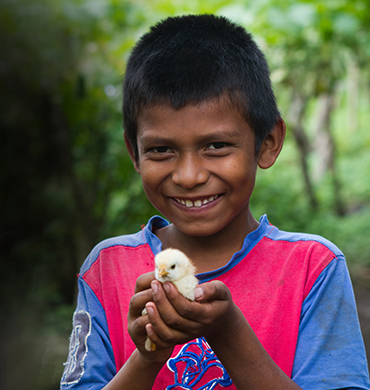Trending Now – The New Way to Grow Vegetables!

I’m often out of touch with current fads or trends, especially here in the United States, since I spend close to half my time traveling around to see our programs. I have now lost count of the number of times that someone here in New York has given me an incredulous look when I admit that I really have never heard of the fashion or music or YouTube sensation they are talking about.
I get to make up for that by learning about exciting trends in other far-flung places – from cell-phone apps in Kenya, to the latest Bollywood hit in India.
And most recently, one I didn’t expect… the new way to grow vegetables in Burundi!
You may remember from Emily Ambrose’s blog post last week and Angela Siele’s post last May that our program partner, the Anglican Church of Burundi, has started working with Cornell University through our new operational research partnership.
Angela was the first student to work in Burundi, from April-July 2014, and during that time she worked closely with the program staff to kick off a new ‘kitchen garden’ activity with women in one area of the country.
The goal of this new activity is to improve the diversity of family diets – while we have been working hard to increase overall food production through our various agricultural activities in Burundi, we decided we wanted to complement this by focusing more specifically on nutrition, and especially on diet diversity.
Most of the families we work with in Burundi grow corn, beans, bananas and root crops like potatoes and cassava… and usually that’s about it. They often don’t grow enough of those to last the whole year, and many families report making do with only one or two meals a day for months on end.
And they also don’t grow nearly enough vegetables, especially to meet the needs of growing children! With this in mind, the team there decided to try a particular garden design used elsewhere – a multi-tiered raised bed approach, with a composting area right in the center. Angela starting working with the field staff in June to train 60 women on this new technique.
My expectation was that we would pause there. We could wait and see how the women liked the gardens, and how well the different vegetables were growing – they had chosen a mix of greens like spinach and amaranth (a local green high in nutrients), squash, carrots, cabbage, tomatoes, onions and chili peppers.
But that wasn’t to be. The new kitchen gardens were such a sensation, that the idea took off – exploded, really! Women in the original group started showing their neighbors and sharing seeds, and then the program facilitated exchanges between staff and women from other areas to see the gardens, bringing the idea to two other regions of the country.
They had new trainings there – and then those women started showing their neighbors as well… From June to November we went from 60 to between 450 and 500 gardens. And those are just the ones the program staff know about! Emily, who was there from October through December, puts the estimate at closer to 600, or perhaps even more.
During my most recent visit in November, we were able to go and see some of the newest gardens, and talk with the women who made them. They had built them on their own, each one doing it a little bit differently – we are now trying to keep track of all the different materials and innovative designs being used.
When I asked one woman who had recently finished constructing and seeding her garden why she had decided to do so, she looked at me with a deadpan face and said, “Well, it’s the new way to grow vegetables.” As if I was the last one to know. I laughed happily in my head as she explained further, while trying to keep a serious face; I didn’t want her to think I wasn’t in the know!
This is one trend I now plan to follow.
————————–
Sara Delaney is a Program Officer with Episcopal Relief & Development.
Images: Top, Kitchen garden tomatoes. Middle 1, Burundian woman and her kitchen garden. Middle 2, Example of a tiered kitchen garden. Middle 3, Community working together on a kitchen garden. Last, Another Burundian woman with her kitchen garden.
An Historical Journey
We invite you to journey with us through our 75 years of healing a hurting world. View our interactive timeline that takes you from our start in the 1940s to the present, and witness our growth in vision and direction. We thank you for your support that allows us to strive towards a flourishing future. It takes #AllHands75!



